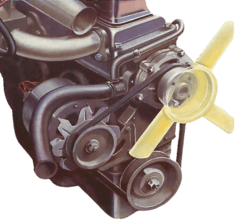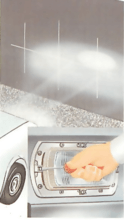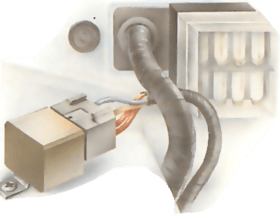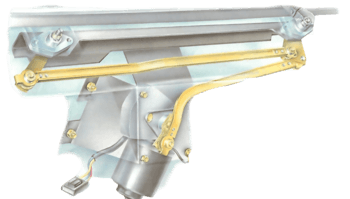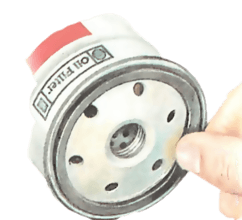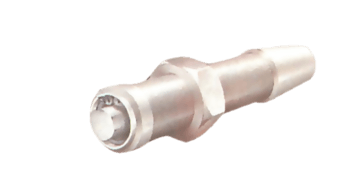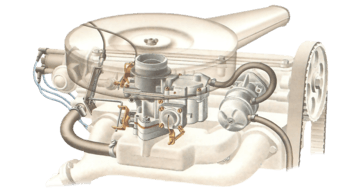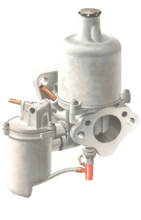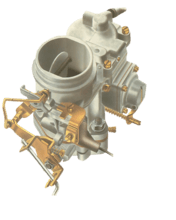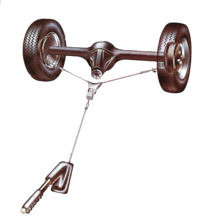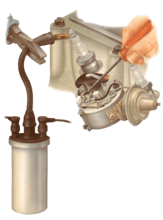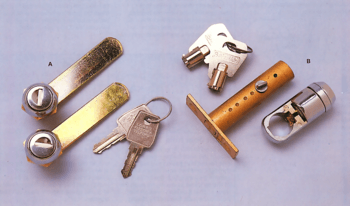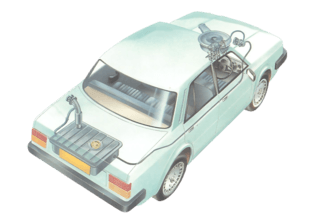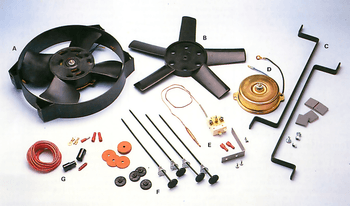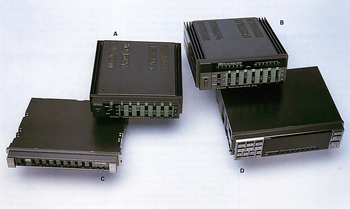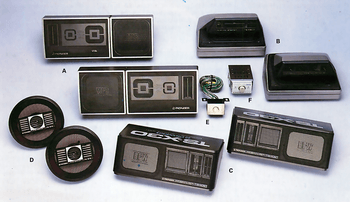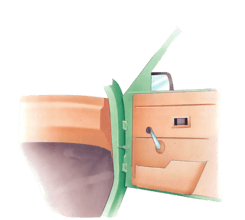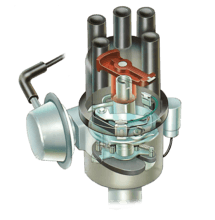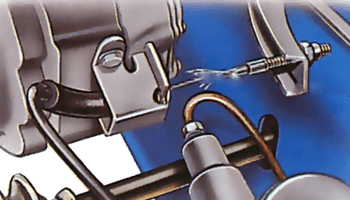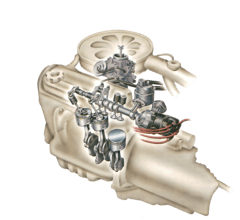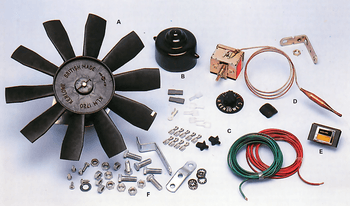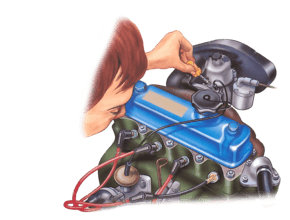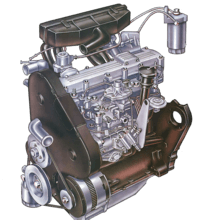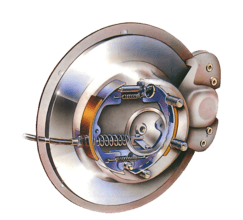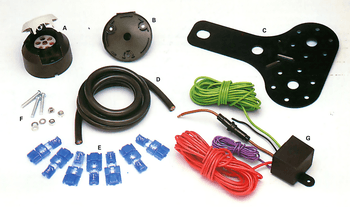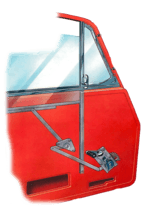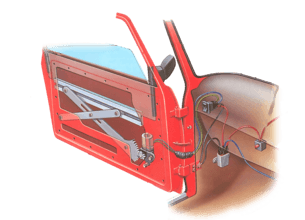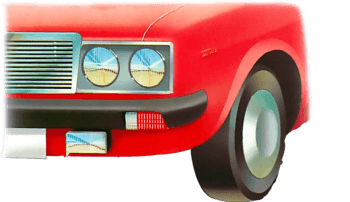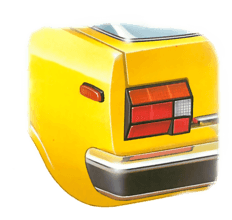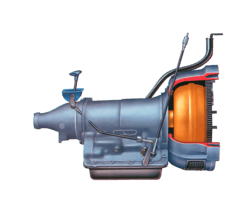Tournevis
The best screwdrivers have shafts made from good-quality steel, and handles of tough moulded plastic.
Buy a tool with a reputable brand name. Cheap tools with brittle plastic handles can be dangerous, as they may break under pressure.

Use a screwdriver with a blade that fits exactly into the screw slot - if it is flat-bladed it should be no wider than the slot. If the blade is ill-fitting, the tool is more likely to slip or open out the screw head. Keep flat blades ground square, with the edge evenly tapered.
A very tight screw can sometimes be shocked loose by tapping the end of the screwdriver with a hammer. A few drops of penetrating oil and a firm tap may free a rusted screw.
Engineer's screwdriver
Strong-shafted engineer's screwdrivers are designed for heavy mechanical work. The longer the shaft and the thicker the handle, the greater the turning effort that can be applied.
The blades may be flat to fit into a straight (or plain) slot screw, or cross-headed (such as Phillips or Pozidrive) to fit into a cross-slot screw. Use the correct type of cross-head for the screw, or its slot may be damaged.
Shafts generally range in length from about 100 to 300mm plain, or 80-200mm cross-head. Shafts may be squared or have a hexagonal shoulder at the base so that a spanner can be fitted to help with stubborn screws.
Chubby screwdriver
Short-handled, short-shafted chubby or stubby screwdrivers are designed for use in confined spaces. Some have handles that can be fitted with a T-bar to give extra leverage.
Shafts are generally about 35-38mm long, and both flat-head or cross-head blades are available.
Angle screwdriver
Angle, right-angle or offset screwdrivers are useful for reaching screws in awkward positions. They are generally 5 to 6in. long. Normally, angle screwdrivers have a blade at each end; both may be the same type - flat or cross-head - or there may be one end of each type
A screwdriver is a tool, manual or powered, for turning (driving or removing) screws. A typical simple screwdriver has a handle and a shaft, and a tip that the user inserts into the screw head to turn it. The shaft is usually made of tough steel to resist bending or twisting. The tip may be hardened to resist wear, treated with a dark tip coating for improved visual contrast between tip and screw—or ridged or treated for additional 'grip'. Handle are typically wood, metal, or plastic and usually hexagonal, square, or oval in cross-section to improve grip and prevent the tool from rolling when set down. Some manual screwdrivers have interchangeable tips that fit into a socket on the end of the shaft and are held in mechanically or magnetically. These often have a hollow handle that contains various types and sizes of tips, and a reversible ratchet action that allows multiple full turns without repositioning the tip or the user's hand.
A screwdriver is classified by its tip, which is shaped to fit the driving surfaces—slots, grooves, recesses, etc.—on the corresponding screw head. Proper use requires that the screwdriver's tip engage the head of a screw of the same size and type designation as the screwdriver tip. Screwdriver tips are available in a wide variety of types and sizes (List of screw drives). The two most common are the simple 'blade'-type for slotted screws, and Phillips.
A wide variety of power screwdrivers range from a simple 'stick'-type with batteries, a motor, and a tip holder all inline, to powerful "pistol" type VSR (variable-speed reversible) Cordless drills that also function as screwdrivers. This is particularly useful as drilling a pilot hole before driving a screw is a common operation. Special combination drill-driver bits and adapters let an operator rapidly alternate between the two. Variations include impact drivers, which provide two types of 'hammering' force for improved performance in certain situations, and "right-angle" drivers for use in tight spaces. Many options and enhancements, such as built-in bubble levels, high/low gear selection, magnetic screw holders, adjustable-torque clutches, keyless chucks, 'gyroscopic' control, etc., are available.
Read more on Wikipedia
Cet outil est utilisé dans
Water pumps wear out through age, through lack of lubrication on older types — which need greasi...
Only a garage with special equipment can align headlamps accurately. However, you may need to do ...
Il y a deux types de base de voyants. L'un est actionné par une pièce de fil ou d'une bande...
The windscreen-wiper mechanism needs little maintenance. At service intervals drip a little oil d...
Fitting a cartridge-type filter Fitting a new disposable cartridge is a simple task, but you mus...
The crankcase emission valve governs the amount of crankcase oil fumes that are recycled into th...
The carburettor is often suspected of causing an engine to run roughly, when the real source of t...
Unlike other types of carburettor, which have fixed jets, the SU has only one jet, so the mixtur...
A fixed-jet carburettor mixes air and fuel by means of several jets. The jets are small holes whi...
The handbrake on most cars is a mechanical linkage of rods and cables, operated by a lever on th...
If your car is misfiring or running badly, or has suddenly stopped completely, the most likely s...
One of the main reasons why so many cars are stolen is that a thief, even if inexperienced, can...
The fuel supply system is generally reliable and any problems that do occur are usually traceabl...
All cars have a fan to help cool the coolant as it passes through the radiator. On most cars,...
No car is acoustically perfect. This can mean that your stereo system does not sound as good in ...
The standard twin-speaker car stereo system has one obvious drawback. If you mount the speakers ...
As well as replacing a door because it has become rusted or been damaged in an accident, you may...
Bosch distributors are found on many different cars and are generally very reliable. But after a...
If your car has a cable-operated clutch and you find that the gears are difficult to engage, the...
Running-on is when the engine continues to turn after you've switched off the ignition because th...
Fitting an electric, thermostatically controlled fan in place of the mechanical, engine-driven t...
Although some experienced mechanics can tune a car's carburettor fairly well by ear, to do the j...
In many ways a diesel engine is less complicated than a petrol engine, with greater reliability ...
Most cars are still fitted with drums on the back wheels with the handbrake operating directly o...
A caravan or trailer must, by law, be fitted with certain warning lights. These are wired up to ...
Quarterlights are now rarely fitted by manufacturers so you mostly find them on older cars. It i...
Electric windows are being fitted to more and more cars as standard equipment, while conversion k...
It is essential to keep your car lights in good working order all the time. Apart from being dan...
Many modern cars are now designed so that their lights are built as a one-piece unit known as a c...
Although they are considerably more complicated than manual gearboxes, with control and operating...

